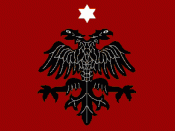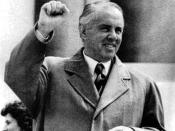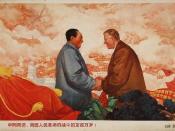Albanians are white people. Their color demonstrates the clean soul they have and what kind of people they are. One of their characteristics is that their face can tell whether they are good or bad, nice or mean, simply or complicated, easy or difficult, intelligent or dumb, happy or sad, everything you need to know! A look in their eyes, their face can explain you their world!
Traditional clothing consists of colorfully embroidered shirts and dresses and in some regions loose-fitting pants for women. Traditional clothing was discouraged under the Communists in favor of inexpensive, modern clothing made by the state. Since the democratic changes in government, people have more choice in clothing, particularly in urban areas. Traditional costumes are still worn in many rural and upland areas, especially among women.
BELIEF
With 70 percent of its population Muslim, Albania is Europe's only predominantly Islamic state. Orthodox Christians, living mostly in southern Albania, make up 20 percent of the population, and Roman Catholics, mainly in the north, make up another 10 percent.
Religious divisions in Albania are not significant, and religious tolerance is such that members of the same family sometimes belong to different religions.
The Communist government outlawed all religions in 1967, making Albania the world's first officially atheist country. Places of worship were closed, church property was confiscated, religious services were banned, and religious practitioners were persecuted. The ban on religion was lifted in 1990. Many churches and mosques have been rebuilt or reopened, and a growing number of people express religious beliefs.
COMMUNICATION
During the Communist era, all publications as well as television and radio broadcasting were controlled by the state. The state appointed editors and journalists, censored information tightly, and used press outlets as tools of propaganda. Because of the extreme repression, no opposition publications appeared...



Good job
I liked that you were proud for what you are.Way to go! Goooood job.
1 out of 1 people found this comment useful.